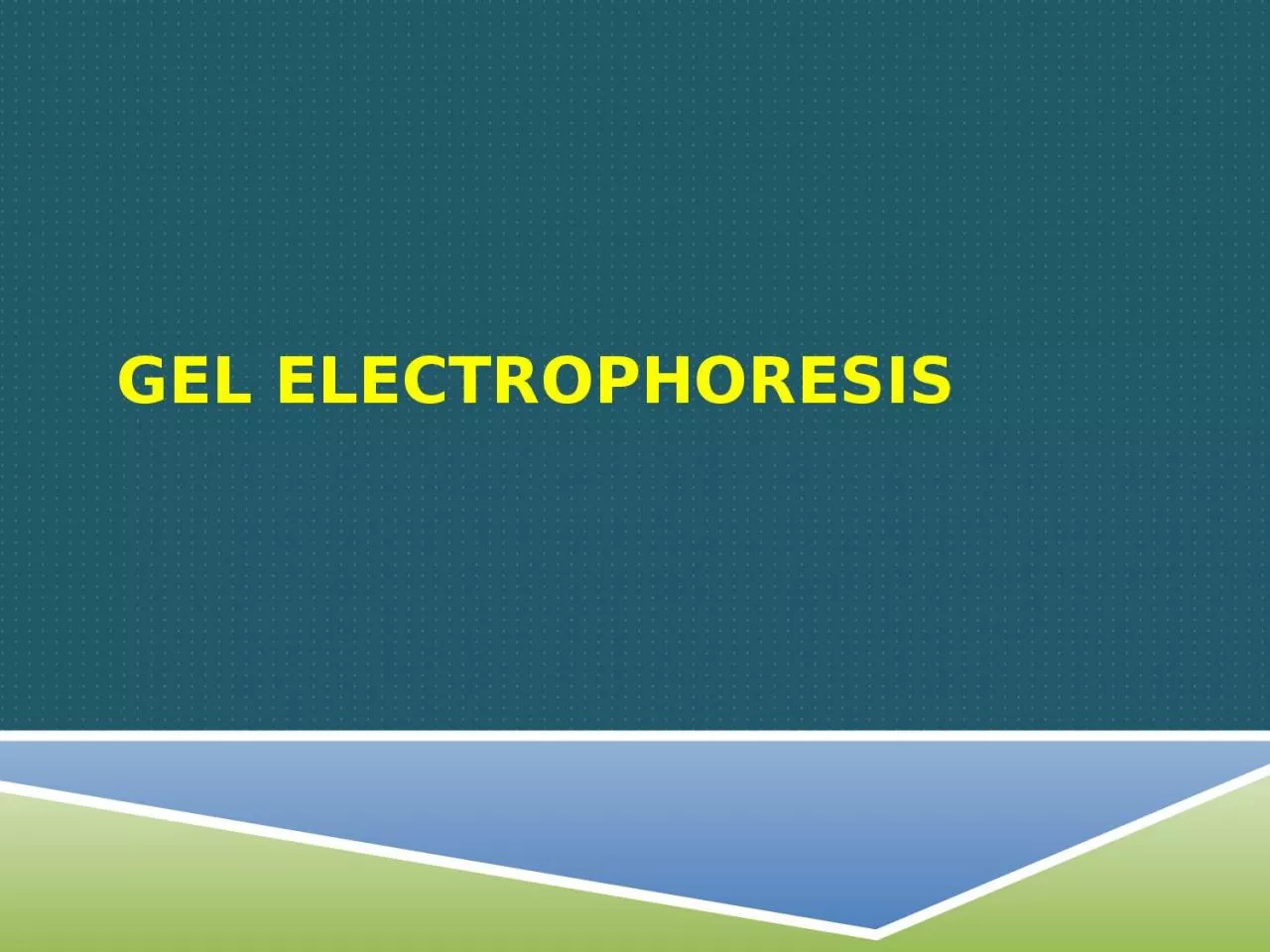

Simply put gel electrophoresis is a technique used to separate molecules such a DNA RNA and proteins according to size Requires an electric current as these molecules are negatively charged Well be looking at separating long strands of DNA into smaller fragments ID: 1046902
Download Presentation The PPT/PDF document "Gel Electrophoresis First, What……" is the property of its rightful owner. Permission is granted to download and print the materials on this web site for personal, non-commercial use only, and to display it on your personal computer provided you do not modify the materials and that you retain all copyright notices contained in the materials. By downloading content from our website, you accept the terms of this agreement.
1. Gel Electrophoresis
2. First, What……Simply put, gel electrophoresis is a technique used to separate molecules such a DNA, RNA and proteins according to size.Requires an electric current as these molecules are negatively chargedWe’ll be looking at separating long strands of DNA into smaller fragments.Can be used to determine someone’s DNA identity (fingerprint), assign paternity, ID criminals from a crime scene, determine relatedness among individuals, useful in cataloging endangered species
3. First, DNA is ExtractedThe same DNA is found in the nucleus of nearly all of your cells (mature red blood cells have no nucleus). Mitochondrion have a totally different set of genes than what is in the nucleus. You inherit them from your mother! Many studies use this DNA to determine how closely related different species of organisms are!Nuclear DNA can be extracted from blood, cheek cells, hair follicles, tooth pulp or mostly any other tissueThere are quite a few protocols that use a variety of chemicals and buffers to isolate ONLY DNA and get rid of everything else
4. Restriction Enzymes Long strands of DNA, usually from those regions that do not code for anything, are cut into smaller fragments using restriction enzymesEach enzyme recognizes different sites to cut This results in many fragments of different sizes (number of bases long)
5. Prepare for gel electrophoresisPower supplyGel Chamber with bufferAfter the gel cools and becomes jelly-like, the comb is removed and is placed in the chamber filled with bufferA compound called agarose is melted in a buffer, poured into a mold and a tooth comb inserted to create wells
6. “running a gel”A loading dye (seen in blue) is mixed with DNA sample and loaded into a wellElectrical supply is turned on…DNA fragments run through the gel from the negative electrodes toward the positiveDNA Ladder (or size standard) is also loaded. This lets allows you to determine how long each fragment is (in kilobases)The gel is stained and examined. The smallest (shortest) fragments travel the farthest down the gel
7. Some stains require ultraviolet light to see dna bands
8. DNA fingerprints are unique to each person
9. Example of FingerprintsOut of the 7 suspects, the bloodstain found at the scene of the crime belongs to……..
10. A person should have ½ of their DNA fragments from their mother, and ½ from their father. **Below: known mom, child and 3 alleged fathers-+MomChild AF1 AF3AF2The child received these fragments from its mother…..which means that they must have received these from the father……so, which alleged father has the same size fragments as the child at these positions???…So Alleged Father #2 is the father of the child.